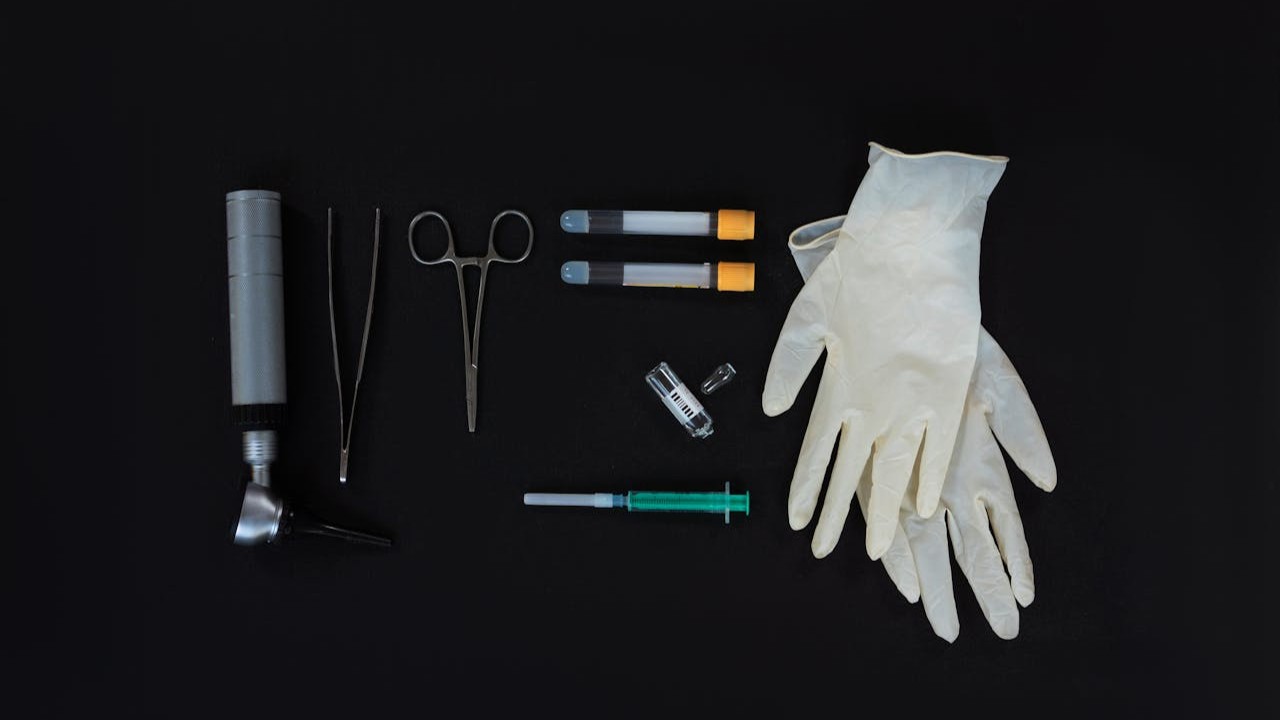Overview
Home insemination kits are single-use sets intended for at-home use: a syringe without a needle places the sample close to the cervix. The approach is discreet and inexpensive, but only works with good timing, clean technique and up-to-date testing. Neutral basics on the fertile window are provided by the NHS. For context on the chances and limits of home use see the HFEA.
Buying online — a brief perspective
There are many ready-made home insemination kits online — from simple basic sets to comprehensive packages. Quality matters more than price: sterile disposable parts, clear instructions, batch/expiry information and no cure-all promises. A complete kit is practical if you want everything at once without sourcing items separately. If you already have a syringe without a needle, a sterile cup, gloves and, if needed, sperm-friendly gel organised cleanly, you don't need a kit — the basic items are enough. Beware of “gimmicks” (activators, fragrances, reusable parts): no proven benefit and sometimes harmful.
What should be in the kit?
- Sterile collection cup
- Syringe without a needle (usually 5–10 ml), disposable
- Disposable gloves
- Optional: pH-neutral, sperm-friendly lubricant
- Labels or bags for date, time, cycle day, notes

Kit types & components
| Component | What it is for | What to watch for |
|---|---|---|
| Syringe without a needle | Places the sample close to the cervix. | Disposable, sterile, smooth plunger action; 5–10 ml is usually sufficient. |
| Soft applicator catheter | Sometimes included; helps gentle placement. | Soft, flexible material; no sharp edges; disposable. |
| Collection cup | Sterile collection of the sample. | Sterile packaging; do not rinse with disinfectants. |
| Sperm-friendly lubricant | Can reduce dryness without greatly impairing motility. | Use only designated products, sparingly. |
| Ovulation test | Helps with timing the ovulation. | Clear instructions, check expiry date. |
| Checklists/labels | Better documentation per cycle. | Note date, time, cycle day, test results. |
Avoid aggressive disinfectants, fragrances or reusable parts without sterilisation evidence.
Does it really work?
It can work, but outcomes vary widely. Key factors are age, precise timing, semen quality and careful technique. Clinics using prepared ejaculate and tight timing often report higher per-cycle chances than home applications without preparation. For a sober assessment see: HFEA on insemination, Cochrane, NHS.
Purchase checklist & quality
- Sterile, individually packaged disposables with clear batch and expiry information.
- Clear, factual instructions without cure-all claims.
- Information on hygiene, testing and disposal included.
- Supplier support contact available.
- No questionable additives such as fragrances or “activators”.
Procedure at a glance
- Plan timing around ovulation (ovulation tests/cycle tracking; see the NHS).
- Wash hands, put on gloves, prepare a clean surface; use only disposable items.
- Collect the sample into a sterile cup and let it liquefy for 10–15 minutes.
- Slowly introduce the sample with the syringe close to the cervix; then lie still for 15–30 minutes.
- Document: date, time, cycle day, test results.
Summary — not personalised medical advice.
Timing & practical tips
- Use the window around ovulation; plan for several well-timed cycles.
- Use lubricant only if needed and then a designated sperm-friendly product sparingly.
- Avoid extreme temperatures; use the sample promptly at room temperature.
- Remain relaxed and avoid stress.
Safety & tests
- Prior testing for sexually transmitted infections for all involved (e.g. HIV, hepatitis, syphilis, chlamydia, gonorrhoea). Information: ICMR and AIIMS/ICMR guideline.
- Use only disposable items; do not reuse anything.
- Avoid any disinfectant or soap residues contacting the sample.
- Seek medical advice for pain, bleeding or fever.
Where to get sperm?
Sperm bank or clinic: Donor sperm is tested, documented and frozen. That increases safety and traceability. Entry point: MoHFW.
Known donor: Possible, but without clinical standards there are more risks (infections, unclear responsibilities, lack of documentation). Guidance for home use: HFEA.
If it doesn't work
First check the basics: ovulation was correctly targeted, technique was clean, sample was fresh and not exposed to heat, and no conventional lubricant was used. If pregnancy does not occur after several structured attempts, medical evaluation is worthwhile (cycle diagnostics, hormone status, ultrasound, semen analysis). Depending on findings, close cycle monitoring in clinic or a clinical insemination may be sensible next steps. Neutral starting points: NHS and HFEA.
Gimmicks & myths
For home insemination kits, sterile disposables and clean technique matter — not accessories with big promises. A brief appraisal of commonly mentioned “extras”:
- “Turkey baster”, pipettes, reusable parts: unsuitable and unhygienic. Sterility, precise control and documentation are missing; infection risk is increased.
- Menstrual/soft cups as a “reservoir”: sometimes discussed, but they show no reliable advantage over clean application with a syringe; they demand higher standards of handling and hygiene.
- “Activators”, fragrances, oils, additives: no proven benefit, potentially harmful to sperm motility and survival.
- Heating devices/heating pads: excessive heat rapidly damages sperm; room temperature and prompt use are more important than gadgets.
- “Legs up/handstand”: popular but unsupported by evidence. Lying still for 15–30 minutes is sufficient; comfort beats acrobatics.
- Flushes or home remedies (e.g. baking soda, vinegar): please avoid. They alter pH and can harm mucosa and sperm.
- Regular lubricants: may impair sperm. If needed, use explicitly sperm-friendly products very sparingly.
- Needle syringes or rigid catheters: do not use. If a catheter is included, it should be soft, flexible and labelled disposable.
Conclusion: a simple, clean set with a syringe without a needle, sterile cup, gloves and clear instructions is superior to most “gimmicks”.
Home vs clinic
| Aspect | Home (kit) | Clinic (insemination) |
|---|---|---|
| Success per cycle | Wide range; depends on timing and baseline situation | Often higher with appropriate indication and prepared ejaculate |
| Safety | Patient responsibility; risk of undetected infections | Standardised testing, documentation, traceability |
| Privacy/cost | Very private; low cost | Less private; higher cost, but structured care |
| Counselling | Self-research required | Medical counselling and informed consent included |
RattleStork — planning and coordination around sperm donation
RattleStork helps people plan family formation responsibly. The platform offers verified profiles, secure communication and practical tools for organisation — appointment notes, cycle and timing entries and private checklists. RattleStork does not replace medical or legal advice but aggregates information and makes it easier to find suitable contacts.

Conclusion
Home insemination kits can help when timing, hygiene and testing are correct. Key elements are simple, sterile components and factual instructions — not the number of gimmicks. If several well-planned cycles do not result in pregnancy, medical evaluation should determine the appropriate next steps. Useful, neutral starting points: NHS, HFEA, Cochrane, ICMR.

